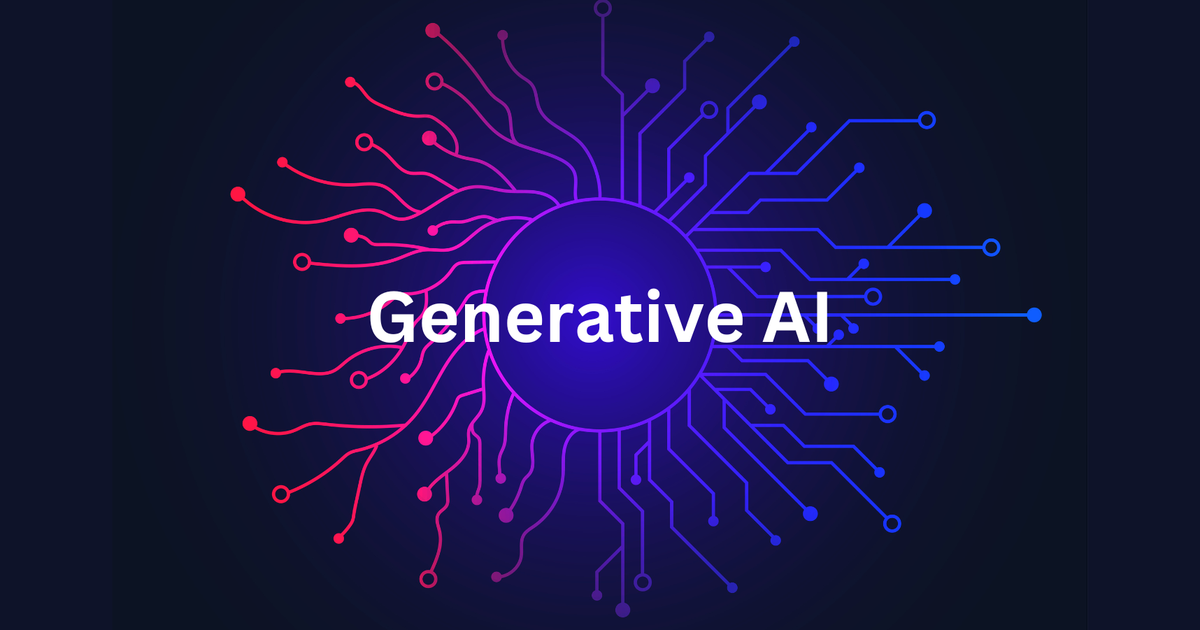The rapid progress of Generative AI has created an important change in the American work environment. The effects of generative artificial intelligence on employment, productivity, and the economy are becoming ever more important as we move more into the digital age. This blog article explores the possibilities and difficulties generative artificial intelligence provides as it transforms American employment going forward.

What is Generative AI?
A form of artificial intelligence known as “generative AI” creates new content—text, graphics, and music, for example—using algorithms and the material it has been trained on. Generative AI has the ability to produce unique content that emulates human creativity, in contrast to standard AI, which works within predetermined parameters. Advanced models like DALL-E, which generates visuals from textual descriptions, and GPT-4, which can comprehend and produce writing that resembles that of a human, power this technology.
The Impact of Generative AI on the American Workforce
Job Transformation and Creation
- Enhanced Productivity: Generative AI can automate routine tasks, freeing up time for employees to focus on more strategic and creative activities. This shift can lead to increased productivity and innovation within organizations.
- New Job Roles: The rise of generative AI is creating new job categories that didn’t exist before, such as AI trainers, data annotators, and AI ethicists. These roles are essential for developing, maintaining, and guiding the ethical use of AI technologies.
- Upskilling Opportunities: Workers will need to acquire new skills to remain relevant in the evolving job market. Continuous learning and adaptation will be crucial as AI technologies become more integrated into various industries.
Industry-Specific Transformations
- Healthcare: Generative AI can assist in diagnosing diseases, developing personalized treatment plans, and even creating new drug formulations. This can lead to improved patient outcomes and more efficient healthcare delivery.
- Finance: In the financial sector, generative AI can be used for fraud detection, risk assessment, and generating financial reports. This can streamline operations and enhance decision-making processes.
- Entertainment and Media: AI-generated content is revolutionizing the entertainment industry, from creating realistic CGI characters to composing music and writing scripts. This can reduce production costs and open up new creative possibilities.
Challenges and Ethical Considerations
- Job Displacement
- While generative AI can lead to new work prospects, there is a chance that it will replace some jobs, especially those that need repetitive and manual labor. Businesses and governments must invest in reskilling and support programs for impacted workers in order to address this issue.
- Bias and Fairness
- Large datasets are used to train generative AI models, and these datasets may have errors. It’s a big task that needs constant attention and involvement to make sure AI-generated material is impartial and fair.
- Privacy and Security
- Privacy and security issues arise from the use of generative AI to produce realistic “deepfakes” and other synthetic content. It is necessary to put safeguards in place to stop abuse and defend people’s rights.
Preparing for the Future
To harness the full potential of generative AI while mitigating its risks, a multi-faceted approach is needed:
- Education and Training: Both current and future workers should be equipped with the skills needed to thrive in an AI-driven economy. This includes technical skills as well as critical thinking and ethical decision-making.
- Policy and Regulation: Governments and regulatory bodies must develop frameworks that promote the responsible use of generative AI, addressing issues such as bias, privacy, and job displacement.
- Collaboration and Innovation: Businesses, academia, and government entities should collaborate to drive innovation in generative AI while ensuring that its benefits are widely distributed across society.
The potential for generative AI to completely transform American labor in the future is significant. We can build a future where artificial intelligence (AI) improves human talents, promotes economic growth, and improves everyone’s quality of life by recognizing and tackling the problems it poses. Proactive adaptation, ongoing learning, and a dedication to moral and responsible AI development are essential for this future.
With generative AI, embrace the future of work and open up new avenues for American creativity, productivity, and prosperity.
